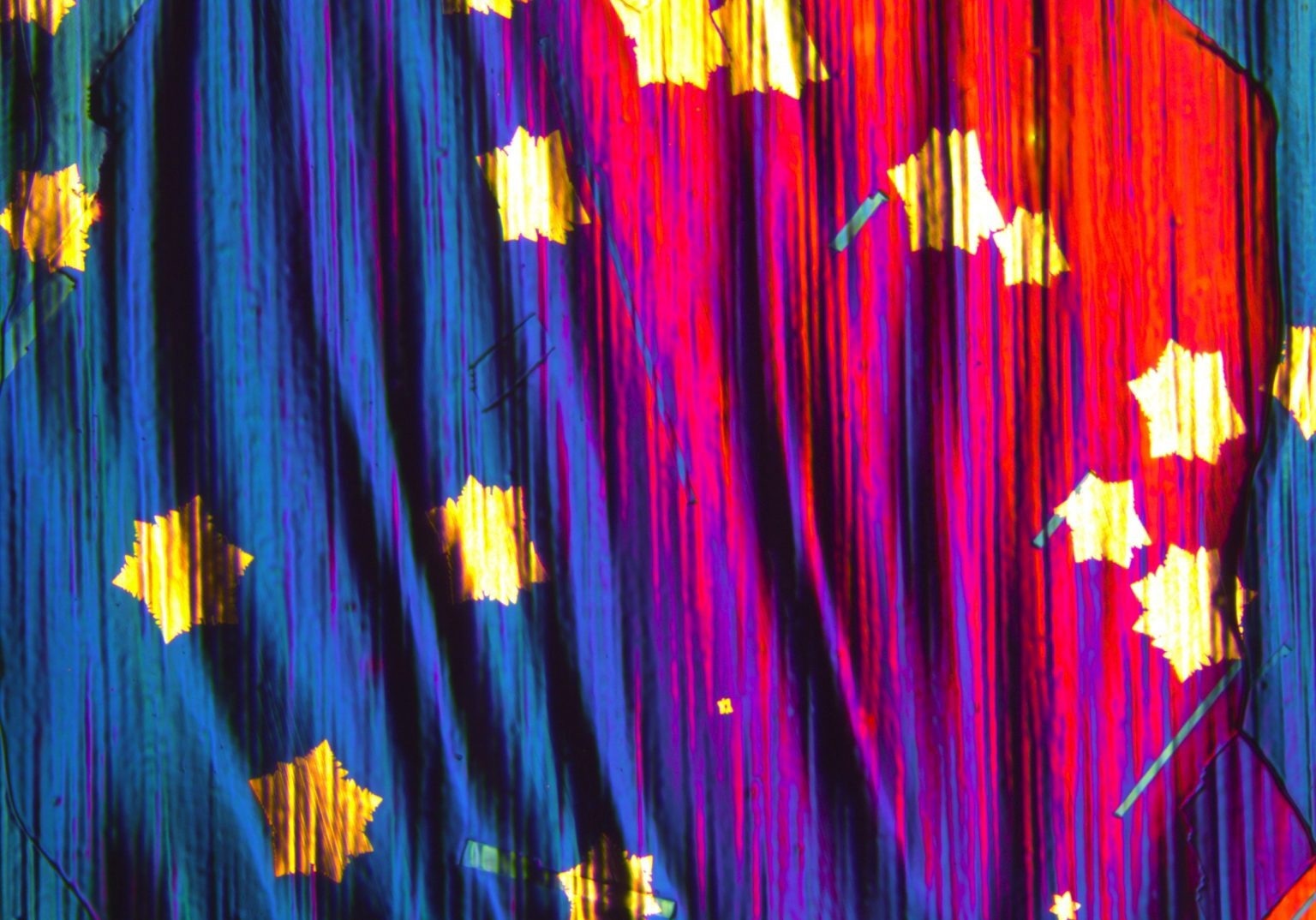The ability to grow high-quality graphene on a large scale using chemical vapor deposition (CVD) is fast becoming a reality. However, the transfer of graphene from the growth substrate to the target substrate remains a significant challenge to the industrialization of the material.

Optical micrograph of star-shaped graphene flakes grown by CVD on copper. (© Stampfer Lab, RWTH Aachen University)
A recent study published in the journal ACS Nano focuses on this issue by devising a method for simultaneously optimizing the growth and transfer processes. The findings of the study demonstrate that high-yield dry transfer of graphene is achievable when the crystallographic orientation of the growth surface is selected carefully.
Graphene: The Material of the Future
In recent years, two-dimensional (2D) materials have gained significant attention from the scientific community due to their unique properties and functionalities. One of the most prominent materials in this field is graphene, a single-atom-thick layer of carbon atoms arranged in a hexagonal lattice. It is known for its exceptional electrical conductivity, high mechanical strength, and transparency.
These properties have made graphene a promising material for various electronics, energy, and materials science applications. For instance, graphene can be used to develop integrated sensors, flexible high-frequency electronics, broad-band optoelectronics, and much more.
To scale up graphene production, researchers have adopted chemical vapor deposition (CVD) as the leading technique for crystal growth. This approach has proven to be a reliable and efficient method for synthesizing high-quality graphene, which can then be transferred and utilized for various applications.
The advances in two-dimensional materials, particularly graphene, have the potential to shape the future of technology and bring about new and exciting developments in various fields.
Challenges Associated with Graphene Growth and Transfer
Despite being a powerful platform for scientific discovery, there are certain limitations and challenges associated with developing 2D materials, particularly graphene.
The gap between individual devices and the ability to reproducibly fabricate them on a larger scale presents a major obstacle to translating these materials into practical applications.
Chemical vapor deposition (CVD) is the leading technique for scalable crystal growth of graphene, but there are still limitations in transferring the graphene from the growth substrate.
This transfer process is dependent on various parameters, including the interaction between the graphene and copper, as well as the orientation of the copper surface. The current sequential optimization approach also has some limitations, as the high quality of graphene on the growth substrate may not translate to the final device due to compromised transfer processes.
These limitations and challenges present a bottleneck for translating two-dimensional materials, specifically graphene, into technology and higher-value-added applications.
Highlights of the Current Study
The methodology used in this study focused on developing a holistic, combined optimization approach to improve the process of growth and transfer for the graphene-Cu system.
The approach was a fast-screening descriptor, which allowed for a systematic analysis of 1000s of graphene islands on over 100 different crystallographic copper (Cu) orientations. The quality of each process step was tracked and studied using inverse pole figures (IPFs) and plotted as quality descriptors for each step.
The IPF representation allowed the researchers to overlay IPFs and identify the highest-index Cu orientations that were best suited for the combined overall process.
To achieve this, the researchers employed an epitaxial close-space sublimation approach to exclusively create optimum Cu(168) orientations, which established a scalable method for graphene island growth and transfer with a high yield.
“The most challenging aspect of the work was the wealth of data that we generated,” says Oliver Burton, a researcher at the University of Cambridge and co-lead author of the paper.
We have taken thousands of data points on thousands of individual graphene islands grown on more than 100 different crystal orientations and performed measurements throughout the entire growth and transfer process.
Oliver Burton, Co-Lead Author, Univeristy of Cambridge
Important Findings and Future Perspective
In this study, the researchers aimed to address the challenges faced in bringing the potential of graphene to real-world applications. They used a comprehensive, data-driven approach to optimize the growth and transfer of graphene to a copper substrate.
The method suggested in this study revealed the benefits of using copper orientations that were previously not explored. This resulted in a higher yield for transferring isolated graphene islands, critical for automated and efficient device production.
These findings have implications for other similar materials systems that face similar challenges. This fast-screening approach based on inverse pole figures (IPFs) is easily adaptable to other materials systems and provides a powerful platform to study the orientation-dependent properties of 2D materials and their interactions with metal and substrate.
It is anticipated that this high-throughput IPF-based methodology will significantly impact the field, providing valuable insights into chemical reactions and physical effects in 2D materials systems. Additionally, it is easily extendable by adding additional descriptors, making it a flexible tool for future studies.
Reference
Burton, O. J. et al. (2023). Putting High-Index Cu on the Map for High-Yield, Dry-Transferred CVD Graphene. ACS Nano. Available at: https://doi.org/10.1021/acsnano.2c09253
Disclaimer: The views expressed here are those of the author expressed in their private capacity and do not necessarily represent the views of AZoM.com Limited T/A AZoNetwork the owner and operator of this website. This disclaimer forms part of the Terms and conditions of use of this website.